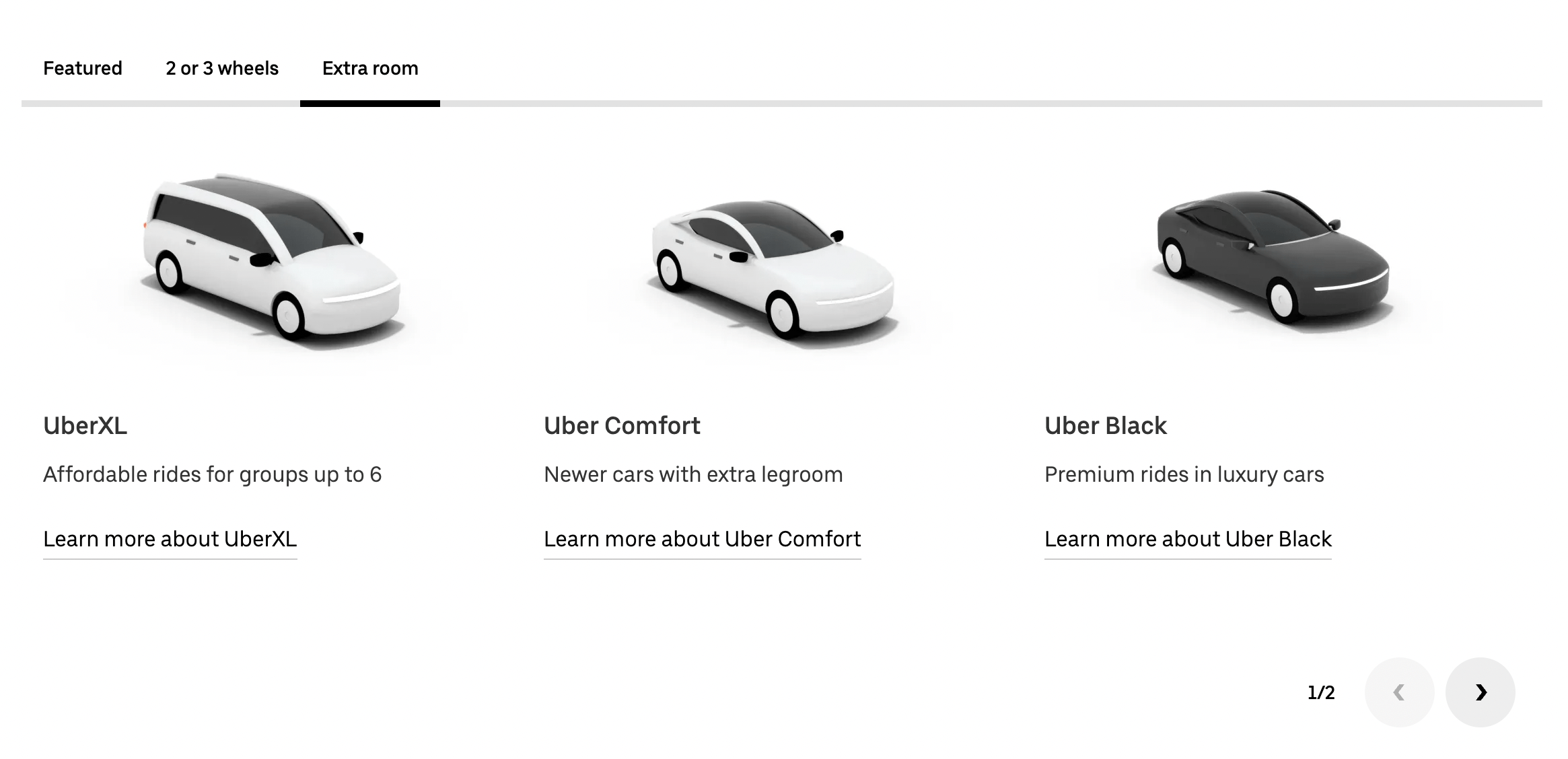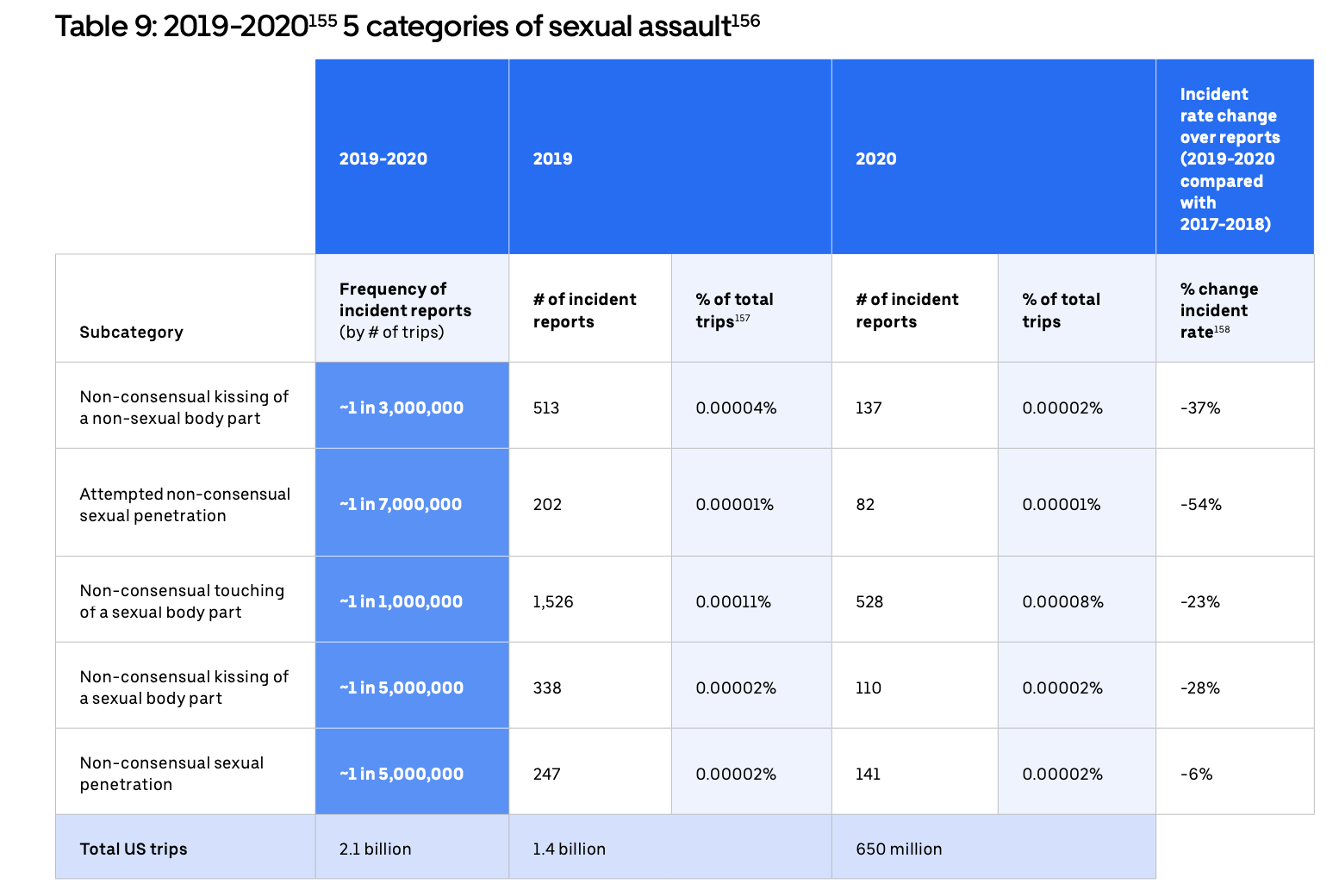Uber, Lyft and other ridesharing companies have completely rewritten the rules of ground transportation.
But what exactly are those rules?
Ridesharing isn’t like renting a car or even hailing a cab. It has its own peculiarities (your driver gets to rate you), pitfalls (like the vomit scam and surge pricing) and perks (you could save money).
Most of the ridesharing guides you find online are written either for drivers — helping them make more money as a Lyft or Uber driver — or from a general passenger perspective.
This passenger guide goes deeper into the consumer dangers of ridesharing, drawing on more than a decade of rideshare cases.
Ridesharing is a hot topic. Driverless cars like Tesla’s Robotaxi are coming soon, perhaps signaling the beginning of the end of human-steered vehicles. Prices for ridesharing continue to rise (and the troubling practice of surge pricing is becoming more common) leading many to search for alternatives.
What is ridesharing?
Ridesharing allows you to arrange one-way transportation via a car or van through a mobile app. The two largest ridesharing companies are Uber and Lyft. But availability can depend on the destination. For example, in India, you may also use BlaBlaCar. In South Africa, you could hail a ride through Jrney. And in Southeast Asia, you might download an app called Grab to get a ride.
Who should consider ridesharing?
- A business or leisure traveler who needs to take a short trip. (The average Uber ride is about five miles, and the company has an eight-hour time limit on trips.)
- Anyone who doesn’t mind working with a non-professional driver in exchange for a lower price than a cab or limousine.
- A traveler who wants additional ground transportation options as a backup to a cab or limousine.
Who should not consider ridesharing?
- Anyone who needs the quality and consistency of a taxicab or a professional driver. (For example, in Indonesia, the difference between a taxi like BlueBird and Grab ridesharing is like night and day. My advice: Stick to the cab.)
- A traveler with special needs (young kids, oversize luggage). Ridesharing companies typically cater to adult travelers with a limited amount of luggage.
- An underage passenger. (Kids under 18 are not allowed without an accompanying adult.)
- Passengers who are so inebriated that they might damage the vehicle by vomiting in it.
How do I use ridesharing?
To use a ridesharing app, you first have to know your options. Start by setting up an account on Lyft or Uber.
Setting up an account is easy.
How to set up an account on Uber
1. Download the Uber app on your phone.
2. Create an Uber account. You’ll need a credit card, email address and phone number. Uber will ask you to create a password and agree to the terms and conditions.
3. Fill in your first and last name, phone number, and preferred language.
4. Uber will send a text message to verify your phone number.
5. Enter your payment information. Uber will preauthorize a charge after you hail a car and automatically charge you after your ride ends.
6. Uber will send you an email to confirm your account.
How to set up an account on Lyft
1. Download the Lyft app.
2. Type in your phone number.
3. Lyft will send a verification code to confirm your identity.
4. Type in your name and email address. You’ll also need to supply a valid credit card.
5. Take an optional selfie so your driver knows who to pick up.
How do I hail a rideshare?
Calling for a ride is easy. On Uber, when you open the app, you’ll get a prompt that says, “Where to?”
You can type an address, choose from a list of saved places, or select a destination from a map. You can also schedule a ride at a particular time.
Uber will then give you a list of options sorted by price.

Note: If you hail an Uber that’s too small, your driver will reject your ride and try to charge you. Always hail the correct size for your group to avoid any misunderstandings.
Rideshare hailing strategies
Pay attention to the pickup location
It may be far away from your current location. Most ridesharing apps will let you specify your pickup location by dropping a pin or giving a precise location address. (If you have trouble reading maps or don’t know how to drop a pin, ask someone for help.)
Note that GPS locations are not always the most reliable. I recently hailed an Uber in Christchurch, New Zealand. I dropped a pin at a parking lot next to a trailhead and the driver spent almost 20 minutes trying to find me because the GPS was inaccurate. When that happens, you’ll need to pay attention to your in-app messages and guide the driver to your location.
Note the name and license plate of your driver
The app will give you that information. Sometimes, taxis double as rideshare cars. Since many taxis look the same, you’ll need to take note of the license plate. Otherwise, you could get into the wrong car. I’ve seen that happen a time or two.
Look for a message from your driver
Sometimes, drivers get confused too, and they can’t find you. Be aware that many rideshare drivers have minimal English proficiency. Google Translate is your best friend if you are using Lyft or Uber in another country. Note: Don’t call your ride too soon. Otherwise, you could end up paying a fee for making the driver wait.
Remember the universal sign of the rideshare: the phone-point
You know the taxi wave (an outstretched arm with a hand waving back and forth)? The ridesharing equivalent is the phone-point. Hold your phone near your chest and point to it with your other hand. The rideshare driver will immediately know that you are the passenger. Sometimes, a nod will also do the trick.
New for 2025: Advance booking options
In response to the growing demand for more predictable and convenient rides, both Uber and Lyft have recently rolled out new features that allow users to book rides in advance.
- Uber Reserve: This service lets passengers schedule rides up to 30 days in advance. The feature, available in select cities, allows riders to book a ride for a future time and ensures that a driver will be there when they need it. The feature also offers guaranteed pricing, so users know the exact cost of their ride, regardless of surge pricing or last-minute changes.
- Lyft Scheduled Rides: Similarly, Lyft offers a Scheduled Ride feature that allows users to reserve a ride anywhere from 15 minutes to 7 days ahead of time. Scheduled rides also offer guaranteed pricing, ensuring that the rider knows what to expect in terms of cost.
Both of these services cater to passengers who need a ride at a specific time, whether for an airport trip, important meeting, or special event. They also allow drivers to plan their schedules more efficiently, potentially reducing the uncertainty that often comes with ridesharing.
Should I tip my driver?
You are under no obligation to leave a tip. But if your driver offered first-rate service, you have the option to add a little extra via your app. Some drivers will engage in “tip baiting” or sharing their sad stories of how they ended up as Uber drivers. But to repeat: Tip for good service — not because you feel sorry for your driver.
What is surge pricing?
Most of the time, the estimated fare you see on your rideshare app will be reasonable, and significantly less than a taxi or limousine. But from time to time, the algorithm loses its mind and shows you an outrageously high price.
Rideshare companies call that surge pricing. And it’s easily explained: Prices go up when more people want rides.
The apps will sometimes warn you when surge prices are in effect, but not always. If you see a price that’s too high, exit the app and try hailing your ride again. Wait five minutes if that doesn’t work and then try again or walk a few blocks to a different location. If the ride is still too expensive, consider alternate transportation like mass transit or even a taxi.
Uber has reportedly made changes to its surge pricing system in certain cities, including Chicago, resulting in fewer opportunities for drivers to earn higher pay during peak demand times. Drivers have reported a noticeable decrease in the frequency of surge pricing, which traditionally offered significant pay boosts when demand outpaced supply.
In addition to fewer surge events, when surge pricing does occur, the multipliers are often much lower than before, meaning drivers are seeing reduced payouts for working during high-demand periods. This shift has sparked concerns among drivers who relied on surge pricing to supplement their earnings, particularly during busy hours.
Note: You can save money by using Google Maps or Apple Maps to get directions — they will list your rideshare options. Or you can try downloading an app like Obi, which lets you compare rideshares by price.
Is ridesharing safe?
Yes, usually. Uber’s independently audited safety report suggests a vast majority of trips are incident-free. However, Uber has also been sued for unsafe rides, including alleged sexual assaults.

Take a few precautions before you get into a rideshare vehicle. Confirm that you’re in the right car (the app will display the driver’s name and license number). If you feel particularly vulnerable, let the driver know someone is expecting you when you arrive. Also, follow your ride on your phone to ensure your driver is going to the right place. And always use your seatbelt.
Certainly! Here’s a suggestion for incorporating the latest safety features implemented by Uber and Lyft into your article:
How Lyft and Uber have improved security in 2025
As passenger safety continues to be a top priority for both Uber and Lyft, the companies have rolled out several new features designed to protect riders. These safety measures have evolved significantly, with both companies introducing in-app tools, real-time trip tracking, and emergency response features.
In-app emergency button
One of the most important safety updates Uber and Lyft have implemented is the in-app emergency button. This feature allows passengers to instantly contact emergency services (911) directly through the app in case of a serious incident.
- Uber’s emergency button: Uber’s in-app emergency button enables riders to reach emergency services with a single tap. It sends the location of the ride and a link to the trip details to the emergency operator, allowing them to quickly respond. Uber also provides the option to share ride details, including the vehicle’s location and the driver’s information, with trusted contacts.
- Lyft’s emergency button: Lyft’s emergency button works similarly, enabling riders to call 911 directly from the app. It also sends important information such as the ride’s details, driver’s name, license plate, and GPS location to authorities. Additionally, Lyft has a safety center, which provides direct access to the emergency button, ride history, and other safety tools.
Real-time trip sharing
Real-time trip sharing is another significant feature that enhances rider security by allowing passengers to share their live ride details with trusted contacts.
- Uber’s ride-share feature: Uber offers “Share My Trip”, which allows riders to share their live trip details—including GPS location and route—with friends or family in real-time. This ensures that someone close to you is always aware of where you are and can monitor your progress during the ride.
- Lyft’s ride tracker: Lyft also offers “Lyft’s Share My Ride” feature, which lets passengers send their ride details to anyone they trust. This includes the estimated arrival time, the car’s location, and a live map showing the journey. Both Uber and Lyft allow users to set up notifications for when their ride starts, when it’s about to arrive, and when it’s completed.
Ride safety checklists
In addition to emergency features and trip sharing, both Uber and Lyft have implemented ride safety checklists that remind both drivers and riders of safety expectations before a ride begins.
- Uber’s safety checklist: Before accepting a ride, Uber encourages both passengers and drivers to verify each other’s identity through the app. Riders are prompted to check that the vehicle’s make, model, and license plate match the details in the app. They’re also reminded to check the driver’s photo to ensure it’s the same person.
- Lyft’s safety checklist: Lyft’s checklist includes similar prompts, including verifying the driver’s information before getting in the car. Lyft also has a “Verify Your Ride” feature that lets passengers confirm the car’s information and driver’s identity before they enter the vehicle.
In addition, both Uber and Lyft have continually updated their background check procedures to enhance rider safety. These background checks are now more thorough, including criminal history screenings, driving record checks, and checks against sex offender registries.
Another notable safety measure introduced by Uber is real-time ride monitoring, which utilizes GPS tracking and machine learning to track the ride for anomalies. If Uber’s system detects any unusual behavior, such as sudden route changes or unsafe driving patterns, it can alert the rider and intervene to ensure safety.
Do Uber and Lyft drivers rate passengers?
Yes. On Lyft and Uber, both drivers and passengers can rate each other on a scale of one to five stars. The ratings “ensure the safety and comfort” of everyone, according to Lyft. Ratings are anonymous, but it isn’t difficult to figure out who gave you a particular review.
Most rideshare experiences are five-star experiences. But occasionally, a driver will do something to annoy a passenger and draw a one-star review. And likewise, a passenger may do something to upset a driver, leading to a low score.
The consequences are different. If a driver gets too many one-star reviews, they’ll get deplatformed. On the other hand, the ridesharing apps just ignore bad passengers. Drivers can see your passenger reviews before they agree to pick you up. So a driver can refuse to accept your ride if you have a score that’s too low.
How do I see my passenger ratings?
In the Lyft app:
1. Go to “view account.”
2. View your rating, ride count, and time spent with Lyft.
In the Uber app:
1. In “settings,” tap privacy and then “privacy center.”
2. In the “privacy center,” swipe to the right and click on the “would you like to see a summary of how you use Uber” tile.
3. Scroll down to the “browse your data” section and tap on “view my ratings” to see your rating.
What’s a good passenger rating on Lyft and Uber?
Do not look to your rideshare app for validation. As long as your driver rating does not fall below 4.5, you don’t have to worry. You can’t control the ratings you get from your drivers.
For example, one driver gave me a one-star review after he saw my screen during the ride. I was sitting in the passenger seat, and I opened the Uber app. Uber displayed a large option to leave a tip for my driver. I clicked away since the ride was not over. The driver, apparently believing I had stiffed him, punished me with a one-star review. Oh well.
How to boost your passenger rating on Lyft or Uber
Really? I thought I told you not to look for validation from these apps. OK, since you asked …
Mind your manners
Use your “pleases” and “thank-yous.” Refrain from having loud conversations in the car or talking down to the driver as if he’s your butler.
Don’t slam the door
That really annoys your driver and can cost you a star or two. Seriously.
No eating, drinking or smoking
If you mess up the car, you lose points.
Keep the conversation to a minimum
If your driver wants to engage in a conversation — and if you do, too — then go right ahead. But stick to the safe topics. Avoid politics and religion and talk about the weather. This is really important if you’re in a country where Americans are unpopular. But if your driver doesn’t want to talk, stay quiet. Sad but true: Chatty passengers lose stars.
If you think you’re going to be sick, ask to pull over
Your driver will be grateful that you did not vomit in the car. You might even get a few bonus points for not making a mess.
What is the vomit scam?
Rideshares are not safe from scams. One of the biggest ones remains the vomit scam, in which drivers charge for bogus damage to their cars. The most common type of damage involves a passenger throwing up in a car — hence the name.
Both Lyft and Uber allow a driver to charge anywhere from $20 for small liquid spills to $150 for “extensive liquid and smelly messes.” I have details on these charges in this story about a Lyft passenger who had to pay for cigarette burns to the car, even though she doesn’t smoke. After I got involved in here case, Lyft dropped the charge.
The vomit scam involves drivers sending fake images of “damages” to their car along with a fictitious report. Then Lyft or Uber will charge the passenger’s credit card for the damage.
Here’s a reader who had to pay $80 for “damaging” his vehicle. Only, he didn’t do it. Again, I contacted Lyft and it dropped the charges.
There’s no clear way to appeal a vomit scam charge. The companies just “review” customers’ disputes and then reiterate that the charges are valid. Unfortunately, Lyft won’t even talk to our advocacy team about these cases any longer. But that won’t stop us from trying to help. And remember, you can always dispute the charge on your credit card under the Fair Credit Billing Act. Here’s my free guide to winning a credit card dispute.
How to avoid the vomit scam
Take a “before” and “after” photo of your car
Making the vomit scam stick hinges on photographic evidence. You need your own evidence. So make sure you take an image or video of your car before and after your ride. I know, it seems a little much — but would you rather pay an extra $150 for your ride?
Don’t eat or drink in the car
The moment a driver hears the crinkle of cookies being unwrapped, your odds of getting vomit-scammed go up. It doesn’t matter if you don’t eat a single cookie; your driver is going to take a look in the back seat after you leave and may decide to assess a damage charge, warranted or not. Solution: Don’t eat. Just wait to eat until you get to your destination.
Ask your driver to inspect the back seat
You can also ask your driver to take a look at the back seat to make sure everything is as you left it. That may seem unusual, but if the driver signs off, you will have one more piece of evidence that no, you did not vomit in the car.
Can you get banned by Uber or Lyft?
Yes. Uber and Lyft can ban riders for several reasons, including:
Damaging the vehicle
Leaving trash, spilling a drink, smoking, or causing intentional damage to the interior or exterior of the car are bannable offenses.
Doing something illegal
If you use a rideshare vehicle to commit a crime — and the rideshare platform finds out about it — you’re done.
Getting high or drunk
Just say no to drugs while you’re in a rideshare vehicle.
Assaulting your driver
Any kind of threatening behavior qualifies; you don’t have to make physical contact. That includes engaging in discriminatory behavior based on race, ethnicity, or gender.
Taking your gun along for the ride
Firearms are not allowed in most rideshare vehicles. Leave your weapons at home.
What are the other major ridesharing scams?
Phantom rides
Sometimes, ridesharing companies charge you for trips you didn’t take. That’s what happened to TJ Cain when Uber charged her more than $200 for a ride taken on her account at 1 a.m. hundreds of miles from her home. Monitor your credit card statement carefully and alert your ridesharing company when you see something suspicious. (After I contacted Uber, it dropped the charge for the phantom ride.)
Missed connections
Remember my advice about checking the pickup location? If you’re not sure, you could end up like Liz Baenen. She says her Uber driver didn’t show up for her ride to the airport. The ridesharing company charged her anyway, plus a $50 cancelation fee. Really? Really. I asked Uber to take another look at her case, and it refunded her money.
You didn’t pay enough
Here’s a warning about paying for your ride in cash: It doesn’t always register with your ridesharing company. So when Diane Somerville paid cash and then found an extra $10 charge on her credit card from Uber, she complained to her bank. If she didn’t pay, Uber threatened to ban her from ever using the ridesharing service again. I contacted Uber and straightened it out for her. Still, maybe it’s best to use a credit card next time.
How to contact customer service at Lyft and Uber
We publish the names, numbers and email addresses of the executives at Lyft and Uber on this site. A brief, polite email to one of the top executives may lead to a quick solution to your problem.
But ridesharing companies have a few peculiarities.
We’re just the intermediary
Like other companies in the sharing economy, Lyft and Uber view themselves as intermediaries between you and the driver. They don’t want to get involved in any dispute you may have with one of their drivers, and they go to great lengths to avoid any responsibility.
Talk is cheap
If you want to talk to a real person at a ridesharing company, good luck. Lyft and Uber would much prefer you talk to an electronic “chatbot” or not having a conversation at all. Uber doesn’t even list a phone number for customer support — it wants you to use the app.
We’re too big to care
At the major ridesharing companies, there’s a pervasive attitude that they are simply too big to have to provide good customer service. If something doesn’t go their way, they just threaten to ban a customer. If someone asks for a review of a case, the just say no. It has come to this: The disruptors are now ripe for disruption. New entrants like Alto ridesharing are already nipping at their heels.
Are autonomous ridesharing vehicles safe?
Yes, mostly. Waymo has begun deploying driverless vehicles in several cities, including Phoenix and Los Angeles. The company claims these cars are safe, but there have been some well-publicized incidents involving autonomous vehicles that have cast doubts on the safety of driverless ridesharing vehicles. There have been no comprehensive studies to date on driverless rideshare vehicles. So for now, we only have anecdotal evidence of the safety of these ridesharing cars.
Ridesharing is one of the biggest innovations of the 21st century. But it is not without danger and consumer problems, and is known for its bad customer service. Using these strategies will help you have a safer ride and avoid many surprises.




